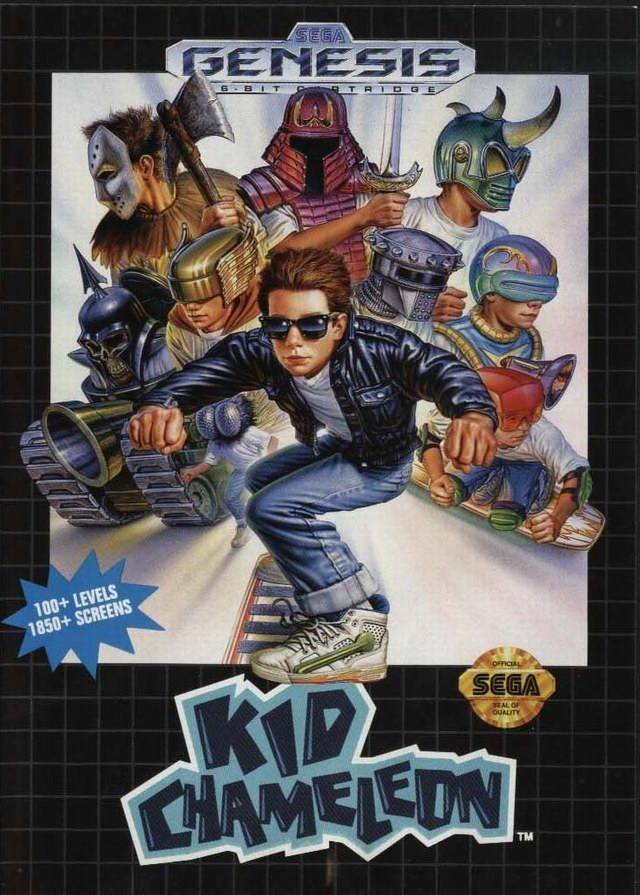
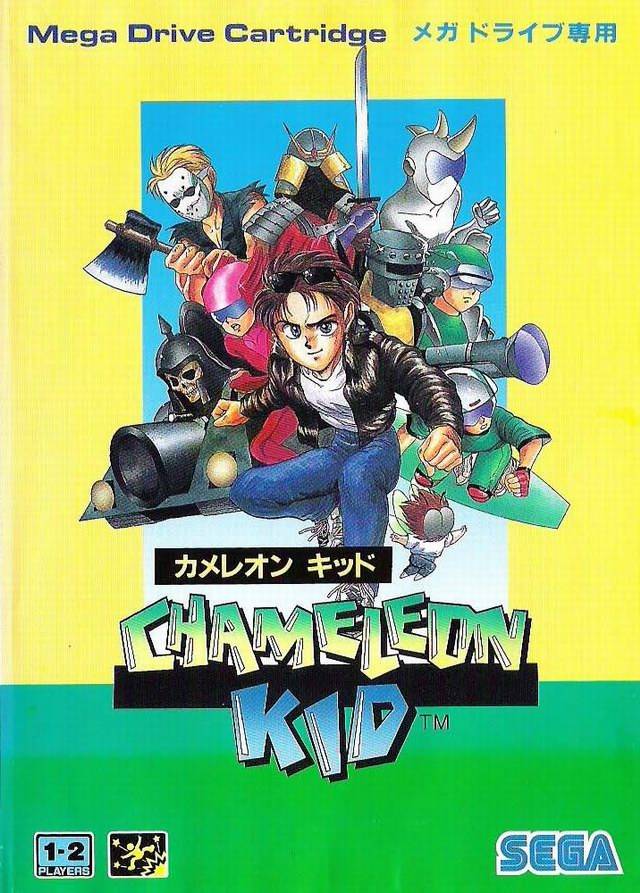
PLAYERS: 1
PUBLISHER: Sega
DEVELOPER: Sega Technical Institute
GENRE: Platformer
RELEASE DATE: 03/92 – (US), 05/1992 – (EU), 05/28/92 – (JP)
ALSO AVAILABLE ON: PS2, PSP, PS3, Xbox 360, Wii Virtual Console, Windows, Steam
Kid Chameleon is a simulated night terror, a game within a game from which there is seemingly no end. 103 levels (sort of – we’ll talk later). No save points or password system. Just pure, unbridled platforming.
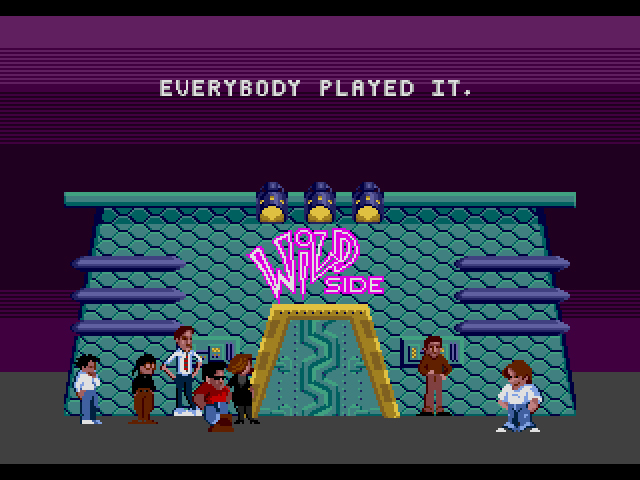
You play as Casey, a champion video game player who goes by the sorta-cool moniker “Kid Chameleon.” The Kid’s latest challenge is “Wild Side,” a virtual reality arcade game where you transform into different costumes while taking on the villainous Heady Metal and his band of robotic misfits. Unlike other arcade games, however, “Wild Side” comes with a twist: once you enter, you can’t leave. Heady Metal has become self-aware and is trapping any gamer that can’t beat “Wild Side” within the game itself. The Kid isn’t worried about this. After all, the Kid is a champion (and a chameleon to boot). Plus, it’s just a video game. How hard could it be?
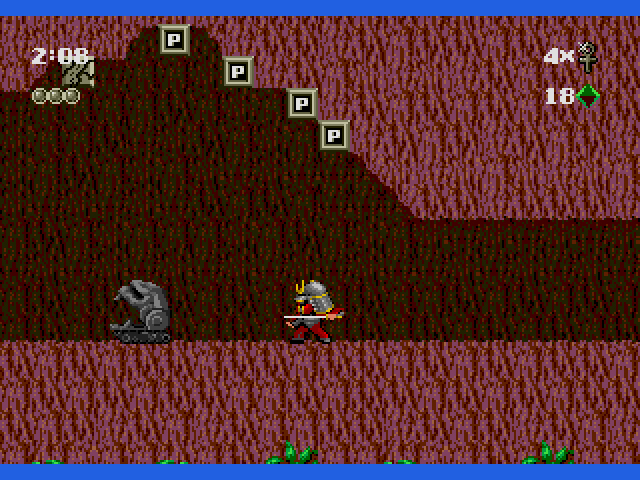
When Kid first enters the game, he’s dressed in a standard white shirt, blue jeans, sunglasses, and fantastic hair. He has two hit points and he can’t do much other than walk and bounce on heads. Hit one of the game’s numerous P squares with your head, however, and you might just find a helmet that gives the Kid special powers. The helmets range from an Iron Knight that helps you climb walls; a Red Stealth Samurai with unbelievable jumping ability and a sweet sword; a Maniaxe (yuk yuk) serial killer who flings powerful axes; the Skycutter, a gravity-defying hoverboarder; and the Juggernaut, a skeleton soldier from World War I who travels in a tank, which shoots flying skull heads.
This is just a sample. All nine helmets are creative, give you additional lifepoints, and are generally effective – though each helmets’ effectiveness does depend on your surroundings. For example, you wouldn’t want to be a bottom-heavy Knight when you have a large number of high jumps to make. Kid Chameleon usually provides the right helmet for the right circumstance, though sometimes they troll you with the wrong helmet for kicks.
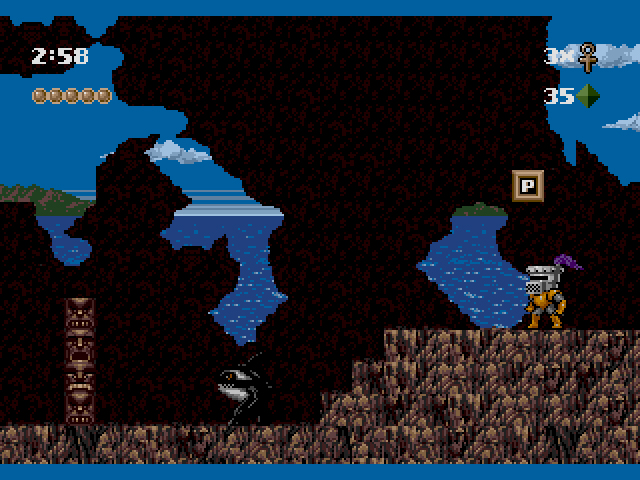
The stage design is sprawling, intriguing, and frustrating in equal measure. Imagine the confusing layout of the Winchester House, but set across an entire game. Most stages take place in a forest or cityscape or hellish landscape with precarious jumps and/or selecting the right path being the key to making it to the end of the stage. But unlike most every other platformer which sends you in a straight path from left to right, Kid Chameleon forges its own paths. You’ll often need to work your way in and around the level – atop levitating tile staircases, through hidden underground pathways, bouncing across skyscrapers – before you find the flag at the end of the stage. And you do so within a strict three minute time limit (in some stages, you’re able to find additional time – some, not all). In Kid Chameleon’s initial levels, you’ll explore your surroundings, hit all the ‘P’ squares, collect the green diamonds, before making it to the end with time to spare. Later levels, however, have so many enemies, so confusing a layout, and so little time that booking it to the end will be your main concern.
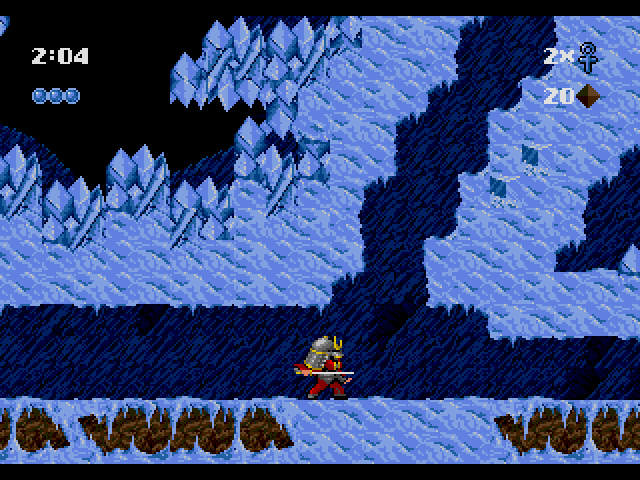
The Wild Side has a plethora of blocks strewn around, blocks which you’ll need to take advantage of if you hope to make it through. There are the P Squares which, once hit, produce a costume, green diamond or even an extra life/continue (large amounts of green diamonds allow you to use special powers that change depending on your equipped helmet); rubber blocks, which bounce you around, rarely in the direction you wish to go; ice blocks that slip you back and forth; crumbly blocks, which break a little too easy; disappearing blocks, which often block your way or make up a platform that you step on to go further.
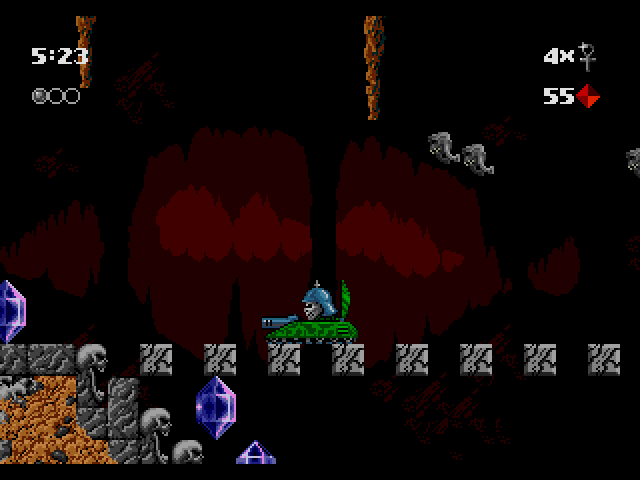
Kid Chameleon is balls hard. It is, in fact, one of the most difficult games I’ve played in a long time, and certainly one of the hardest platformers on the Genesis. The challenge is part of the game’s charm; Kid Charm-eleon, if you will. But said difficulty can ruin you, if you’re not careful. I spent all my lives – over twenty in total – in the scrolling death wall level, “Forced Entry” since it’s all but nigh impossible to move as quickly as the death wall/game wants you to.
Thank God, then, for the carefully choreographed series of warps. These warps are hidden across the levels and, once found, take you to future levels (and sometimes levels you’ve already completed – “Die!”), among which are the mini-stages known as ‘Elsewhere.’ Elsewheres are transitional stages used to bring you from one level to the next (though the game does count them as one of the 100+ levels), and usually have a couple of warps within their boundaries. They don’t serve much of a purpose, other than to take you from Point A to Point Wherever-The Hell, but their presence is interesting.
Warps get you through Kid Chameleon quicker, but using them comes at a price. Avoiding one difficult level doesn’t mean that there isn’t another equally difficult level just around the corner. It’s also nigh impossible to access all the levels in one playthrough, thanks to the warps, but that just means you’ll have a reason to replay Kid Chameleon in a funky fresh new order.
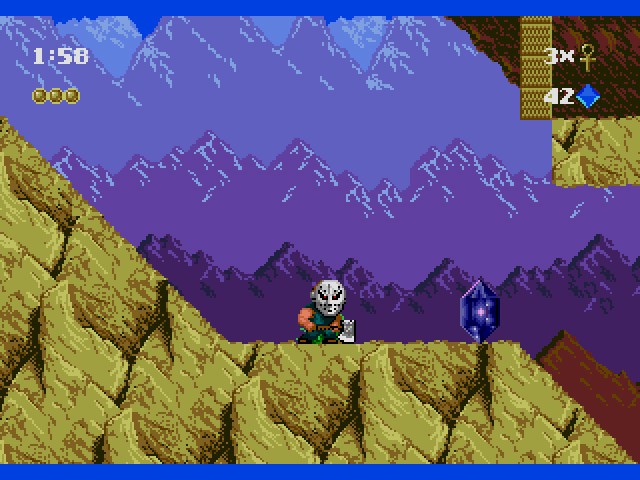
Many of Kid Chameleon‘s stages are over and done with quickly, but there are those that impress themselves upon your consciousness. Whether due to difficulty or creative design, here are the stages that bored themselves into my brain and have yet to let go:
- “Isle of the Lion Lord,” an incredibly brief jaunt through a series of jungle platforms where two Egyptian-like Lions bum rush you with wizard sticks. The Lions are tougher than your standard opponent, but they’re defeated easily if you manage to bounce on their head or are clad with the Maniaxe helmet.
- “The Deadly Skyscrapers,” a seemingly infinite series of precision jumps across mile-high skyscrapers. This level doesn’t have much to do other than jump continuously higher, but you’ll need to have the Samurai helmet in order to jump well. Jumping is one of the helmet’s greatest skills, but when equipped, the helmet also has slippery footing. One wrong jump can send you plummeting back to the ground and beyond.
- “The Crystal Crags 1” starts off in a calm, wintery landscape before a snowstorm turns it into a dangerous excursion through falling ice. The ice from the storm hurts you, and while you can make your way underground, there is only one way out of this level and that’s with the Berzerker helmet. Miss the helmet or get hit too many times by falling ice, and you’ll be replaying this level over and over before you make it through the storm.

Kid Chameleon is inspired madness, to say the least. The creature designs, like the land-based killer whales or the robots that, once destroyed, run wildly across the level with flames pouring out of their top half, never ceased to amuse and terrify. The main boss, Heady Metal, appears several times throughout the course of your journey, and is a disturbing almost see-through head (sometimes heads) that vomits at you while you attack it. Then there’s the discordant sound effects, in keeping with the industrial soundtrack. The word “Die!” is gargled so often, you’ll think you were in the middle of a Rob Zombie film. The sheer breadth of helmets and their abilities, the unrepentant difficulty, the multiple directions one can take to beat the game. These features might make one think that Kid Chameleon hails straight from the land of the weird and free, Japan. In fact, the game was made by the Sega Technical Institute, an American development studio that also developed Sonic Spinball, Dr. Robotnik’s Mean Bean Machine, and Comix Zone among others. Those games all have their merits, but Kid Chameleon is arguably the studio’s seminal creation, a truly original platformer that more than stands the test of time.

Along with being a platformer of the highest order, Kid Chameleon is also a quintessential Genesis game. The muted colors, janky, rubbery synths, a sense of hopeless despair coupled with careless enjoyment, and haunting imagery wouldn’t be caught dead on Sega’s more kid-friendly rival, the SNES (Demon’s Crest notwithstanding). Sadly, the game never rose above cult classic, despite being packaged and repackaged in many of Sega’s more recent Genesis collections for PS2, PS3, and Xbox 360. There are no sequels. No HD remasters. Kid Chameleon stands alone, a frightening, challenging time capsule from which few have recovered. Long may its insanity reign.
A-

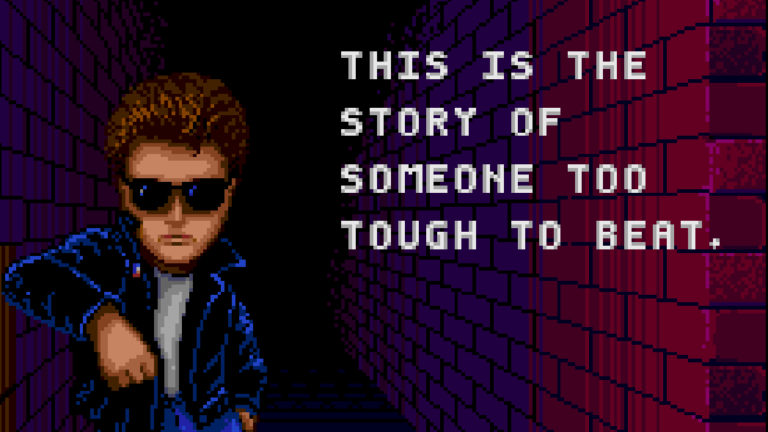
22 replies on “Kid Chameleon (Genesis, 1992)”
Crystal Crags 1…agh. I just played this game (and decided the people who requested I review it are cruel). But this level…those sadistic developers had to put a Samurai helmet right next to the Berserker helmet. So over and over, I got lost and defeated (and grabbed by creepy hands). I was so glad to finally be done with this level, but it kinda killed my desire to play any more.
Yeah, there are definitely certain levels that are sadistic beyond reason. Crystal Crags 1 is definitely one of them. I don’t blame you for stopping, though the difficulty does ease up… for a time
“When Kid first enters the game, he’s dressed in a standard white shirt, blue jeans, sunglasses, and fantastic hair.”
Four looks I can’t get away with (especially the latter).
Only greasers can get away with that look, I’m pretty sure.
I’m such a geek I need to use a dictionary to find out what a “greaser” is? 😀
Kid Chameleon forever!!! Those elsewhere levels have haunted my dreams since I was a kid. Something about the dimension hopping has always left me with an unsettled feeling. This game just has that hopeless despair feeling you perfectly hit on in spades. Great review, Dylan. Keep up the good work!
Thanks Eric! Glad you enjoyed it.
Well this is the first time I’ve disagreed with one of your reviews Dylan.
The game has merit which you point out, but it’s nowhere near an A for me, around a C would have been fair.
Despite its neat concepts the game frustrates. The lack of password or save system cripples the game and the audio visuals are far from top Genesis fare.
We shall have to agree to disagree on this one my good fellow.
KC definitely has its faults, but some of them add to the game’s bizarre personality. I do understand your points, though.
Whoa, whoa, whoa, let’s back it up a lil bit. You changed your chronological way of reviewing?
Never cared for this game. Everything about it is so run of the mill and Plain Jane. Slippery controls will ruin any platformer. It’s worse when it comes with confusing level design.
This game was touted as having a thousand “screens” or something. Even as a teen I was like “whatever that means, who cares”. Looks like a homebrew game done with a level editor. Cut and paste city.
When you get to the really good platformers on Genny, this game will start to look like crud in comparison.
Solid review though, even if I don’t agree with its praise.
The chrono reviews will return later this week. This review was a Patreon request made several months ago.
I didn’t grow up with “The Kid,” but yeah, when I was younger, this game didn’t look good to me at all. Now that I’ve traveled through scores of bad SG-1000/Master System games, I find it pretty impressive.
That being said, I’m excited for more awesome platformers on the Genesis.
I remember back in the day, that when the Mario vs Sonic argument would break out, the Mario kids would always point out that Sonic is fun, but they like games with lots of power-ups like Mario. Anyway, I always thought this game was Sega’s answer for gamers that wanted power-ups in their games.
That’s a really good point.
I I was kind of turned off by this game when it came out. I guess the graphics didn’t wow me. I even played it for a bit at a friends house. Only later did I learn how awesome this game is. I’ve read a few in depth discussions about this game. And it is pretty amazing. Basically it is like a huge maze with tons of secrets and excellent platforming, more so than Probrably any other platform game. I will some day go back and conquer it, but when I understood the depth of this game it started seeming pretty awesome. I’ll try and find a good article I read on it. But it’s a lot more than shallow graphics than it initially appears. With all kinds of secrets involved with the power ups.
Yeah, I didn’t play this game as a kid because it looked stupid. I’m glad old me knows better (sometimes).
Also incidentally. Mark Cerny made this game. I can’t find that article I read a few years ago, but it basically breaks down the game structure and describes why this game is so great. I had only ever touched the surface of this game.
“Kid Chameleon usually provides the right helmet for the right circumstance, though sometimes they troll you with the wrong helmet for kicks.”
Are the p-blocks in anyway randomised or could you rely on memory after a few run-troughs ?
Memory, thankfully. The helmets are usually placed next to each other, though, and the Kid’s noggin is so big that sometimes you bust the wrong P-block.
This game always looked so bland and sounded so dull to me.
The whole “1000 screens!” and “9 powerups!” thing just felt like a shoddy gimmick to try to overwhelm its very mediocre game play with quantity over quality.
Wow, an A-. This is one game I couldn’t get through as it just felt endless and monotonous to me. I think it really suffered from a lack of a save system of any sort. It was just way too long for a single sitting; I would usually just lose interest at some point. Thankfully this is one that I rented and never bought it.
Agree on the lack of save system, it definitely could have used one.
This game invented “git gud”.